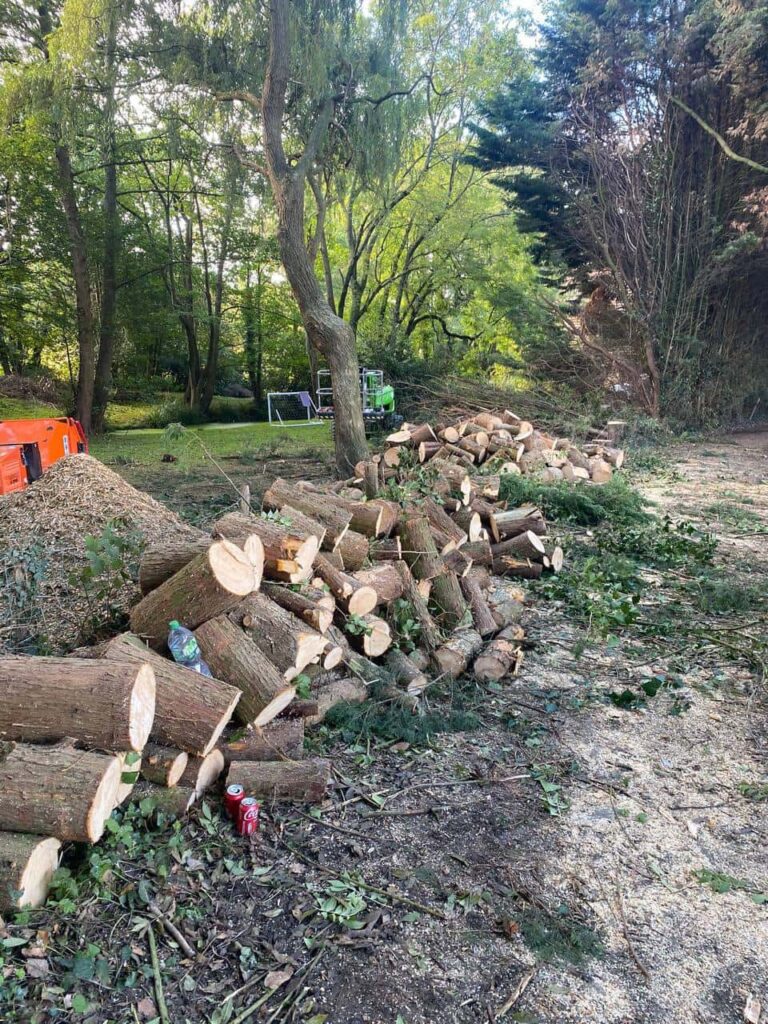Introduction: You’ve gone through the process of having a tree removed from your property, and the stump remains as a reminder of its former presence. Over time, you might notice new shoots or sprouts emerging from the stump. This phenomenon, known as tree stump regrowth, can be frustrating and may even pose a risk to your property. In this blog post, Worlingworth Tree Surgeons will explore why tree stump regrowth happens and share tips on preventing it.
Understanding Tree Stump Regrowth
Tree stump regrowth occurs when a tree’s root system, or the root collar or crown, contains dormant buds. These buds can remain inactive for years until they receive the right signals, such as increased light or nutrients. Once activated, they produce new shoots and foliage.
Several factors contribute to tree stump regrowth:
1. Root Collar and Adventitious Buds:
The presence of dormant buds in the root collar or root crown area can give rise to new growth when conditions become favourable.
2. Species Characteristics:
Some tree species are more prone to regrowth than others. For example, hardwood trees like oaks and maples are more likely to produce new shoots from stumps.
3. Environmental Conditions:
Increased light, moisture, and nutrients in the surrounding soil can stimulate dormant buds, leading to regrowth.
The Risks of Tree Stump Regrowth
While new shoots from a tree stump may initially seem harmless, they can pose several risks:
1. Property Damage:
As the shoots grow, they can push against structures, foundations, and fences, potentially causing damage.
2. Aesthetic Concerns:
Tree stump regrowth can detract from the appearance of your landscape, particularly if you’ve worked hard to remove the original tree.
3. Maintenance Hassles:
Ongoing maintenance is required to keep the regrowth in check, which can be time-consuming and costly.
Preventing Tree Stump Regrowth
Preventing tree stump regrowth is more effective and less troublesome than dealing with it once it occurs. Here are some strategies to prevent regrowth:
1. Stump Removal:
Removing the tree stump, including its root system, is the most definitive way to prevent regrowth. Professionals should ideally perform stump removal to ensure thorough extraction.
2. Chemical Treatment:
Applying a stump killer or herbicide to the freshly cut surface of the stump can help prevent regrowth. Follow the manufacturer’s instructions and use protective gear when handling chemicals.
3. Cover the Stump:
Covering the stump with a heavy-duty plastic tarp or black plastic sheeting can block sunlight and prevent regrowth. Secure the covering with weights or stakes.
4. Monitor and Maintain:
Even after taking preventive measures, monitor the stump periodically for signs of regrowth. If new shoots emerge, promptly remove them to prevent further growth.
5. Consider Grinding:
If complete stump removal is not feasible, stump grinding can be an effective alternative. Stump grinding involves grinding the stump below the soil surface, preventing regrowth.
Conclusion: Tree stump regrowth can be a persistent issue affecting your property’s aesthetics and safety. By understanding the factors contributing to regrowth and taking proactive measures to prevent it, you can ensure that your landscape remains free from the unwelcome resurgence of tree stumps. If you’re unsure about the best approach to preventing tree stump regrowth, consult with professionals like Worlingworth Tree Surgeons, who can provide expert guidance and services to safeguard your property.
Call us on: 01728 448 695
Click here to find out more about Worlingworth Tree Surgeons
Click here to complete our contact form and see how we can help with your tree’s needs.

